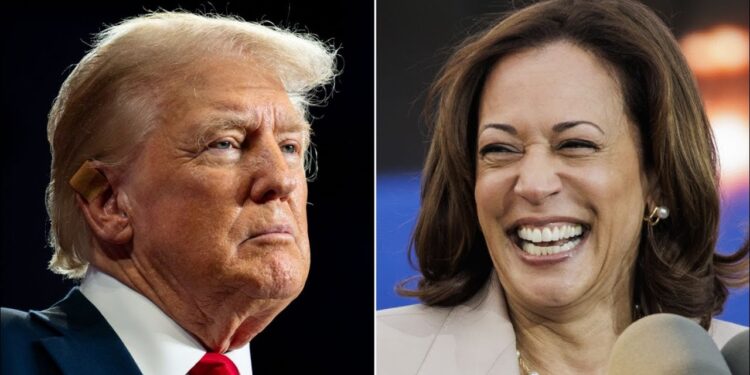Election seasons bring a mix of anticipation and uncertainty for investors. Changes in policies and leadership often influence stock prices across various sectors, creating an environment where both risks and opportunities arise. Understanding these dynamics can help investors make more informed decisions and potentially capitalize on market movements.
Let’s explore the strategies that can help you thrive in an election-driven market environment, along with valuable resources to deepen your investment insights.
1. Understand the Impact of Elections on Market Volatility
Historically, the stock market experiences increased volatility leading up to and following elections. Investors often react to potential shifts in policies, particularly in sectors like healthcare, energy, and technology, causing market swings that reflect this uncertainty. The phenomenon is so consistent that some refer to it as the “election cycle effect.”
According to an analysis on historical election impacts on stocks, market movements are influenced by both expected and unexpected outcomes. A candidate’s platform can impact certain sectors positively or negatively, depending on their stance on regulations, taxes, and government spending. The takeaway? Be prepared for more price fluctuations, and consider short-term volatility as an opportunity for strategic entry or exit points in the market.
2. Focus on Recession-Resistant and Defensive Sectors
Election cycles can coincide with economic uncertainty or even recessionary pressures, making recession-resistant or defensive stocks a solid choice. Defensive sectors, such as utilities, healthcare, and consumer staples, are typically less impacted by economic fluctuations, as their products and services remain essential regardless of the political landscape.
For instance, companies in the healthcare sector, particularly those with a focus on essential medical supplies or services, may remain stable. This article on defensive stocks breaks down the advantages of investing in stable, demand-driven sectors that perform well even during economic slowdowns.
Also, consider dividend-paying stocks in these sectors. Companies with strong dividend histories can provide a buffer against market volatility and a steady income stream. Dividend-paying companies often have stable cash flows and strong balance sheets, making them a safer option for conservative investors.
3. Analyze Policy-Driven Sectors: Healthcare, Infrastructure, and Energy
Policy-driven sectors are often among the most impacted by elections. Analyzing each candidate’s platform can provide valuable clues about which industries may benefit or face challenges depending on election outcomes.
- Healthcare: Policy changes can dramatically impact healthcare stocks, especially regarding regulations, drug pricing, and insurance coverage. Companies in biotech, pharmaceuticals, and healthcare services often see price shifts depending on proposed policies. Take a closer look at this healthcare sector guide to understand how policy shifts can create opportunities within this sector.
- Infrastructure: Government spending on infrastructure can be a significant growth driver for industries related to construction, transportation, and utilities. In times when government spending is expected to increase, infrastructure stocks may offer substantial gains. A deep dive into potential government contracts and initiatives can reveal opportunities within this sector. For more insight, check out this article on infrastructure investments.
- Energy: Policies related to energy, especially renewable energy, can have lasting impacts. Clean energy initiatives often receive boosts from candidates who prioritize sustainability, while fossil fuels may perform better under less restrictive policies. With the world increasingly focused on sustainability, renewables may see long-term benefits, even as short-term swings are common. Learn more about these trends in this renewable energy investment article.
4. Capitalize on Market Volatility with Dollar-Cost Averaging (DCA)
Dollar-cost averaging is a timeless investment strategy that involves investing a fixed amount in a particular asset at regular intervals, regardless of its price. This approach helps mitigate the risks associated with market volatility by averaging out the purchase cost over time. During the ups and downs of an election season, dollar-cost averaging can be particularly useful, as it minimizes the impact of timing the market incorrectly.
This strategy is especially beneficial for long-term investors who want to avoid the pitfalls of emotional investing during turbulent periods. Here’s a detailed breakdown of how dollar-cost averaging works and why it’s valuable for election seasons and beyond: Learn more about DCA here.
5. Consider International Diversification to Spread Risk
With elections often creating uncertainty domestically, diversifying internationally can help reduce risk. Global markets can offer balance, as foreign economies may not be as directly impacted by the election results. Emerging markets, for instance, often follow different economic cycles, which can provide a buffer against volatility in the U.S.
International ETFs or mutual funds allow you to gain exposure to global markets without the complexities of buying individual foreign stocks. This strategy offers a way to capitalize on growth opportunities abroad while reducing the overall impact of U.S.-focused political shifts. Here’s a helpful guide on international diversification for U.S. investors.
6. Stay Informed and Adapt Quickly
In today’s fast-paced financial environment, staying informed and adaptable is key. News travels quickly, and markets can react instantly. Keeping up with credible financial news sources, such as Bloomberg, The Wall Street Journal, and CNBC, can help you spot emerging trends and opportunities.
Additionally, using financial tracking apps or subscribing to newsletters that summarize market events can be invaluable for busy investors. Apps like Robinhood and Webull not only provide market insights but allow you to act on them quickly.
Final Thoughts
While election seasons add complexity to investing, they also bring unique opportunities. By understanding the effects of political shifts on different sectors, employing strategies like dollar-cost averaging, and diversifying internationally, investors can navigate this period with greater confidence.
As always, staying informed and strategically balancing risk with opportunity is the best approach. Explore resources, make use of educational tools, and keep adapting your strategy to maximize your potential returns during election seasons and beyond.




















